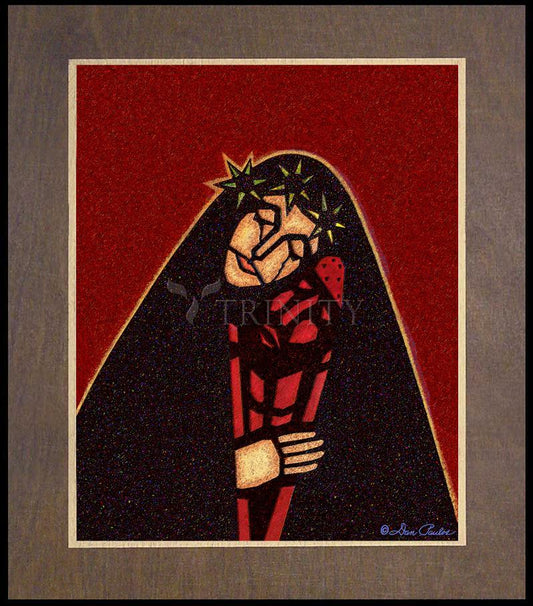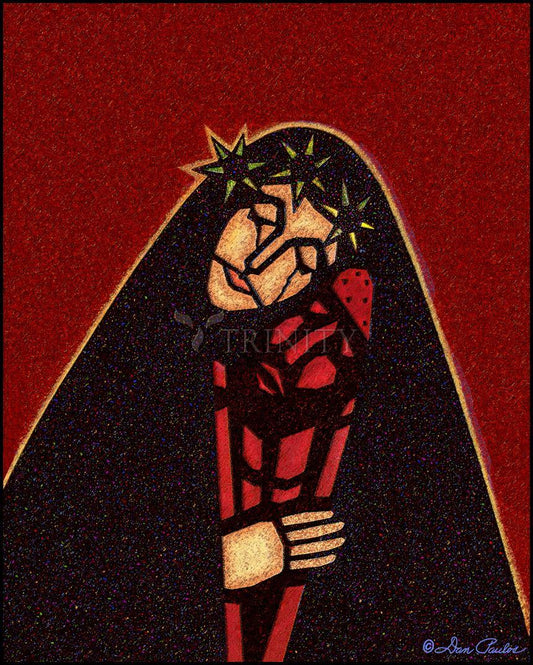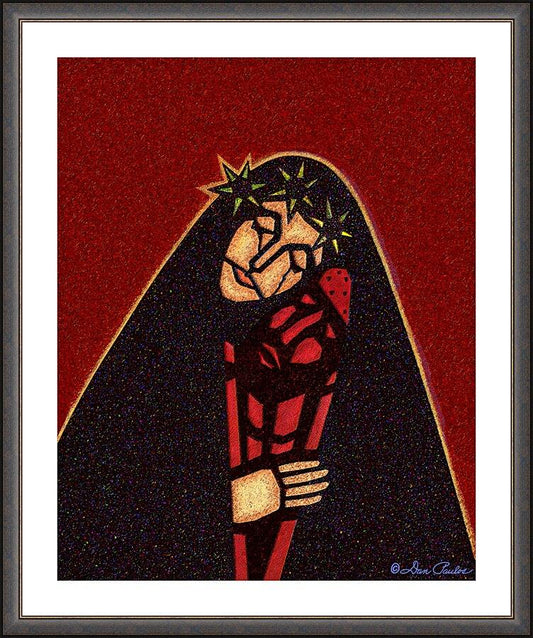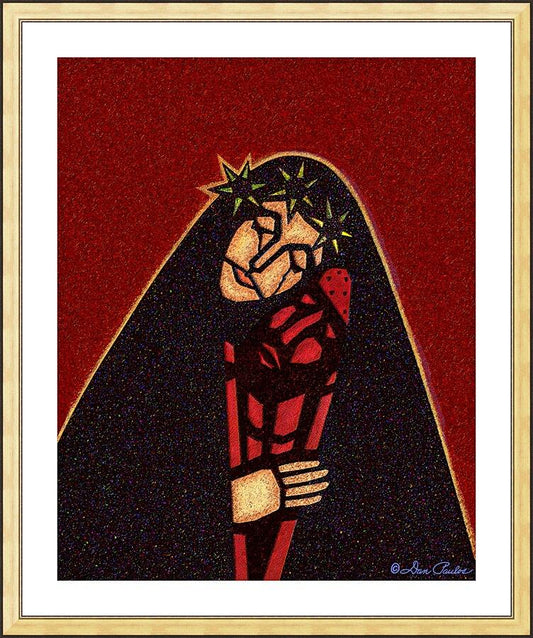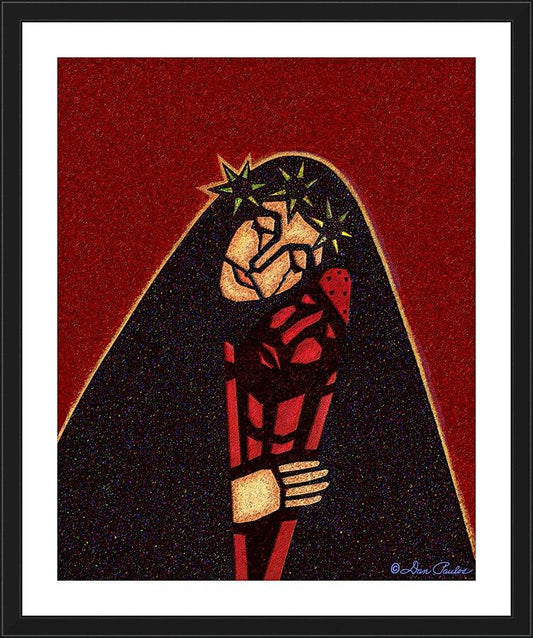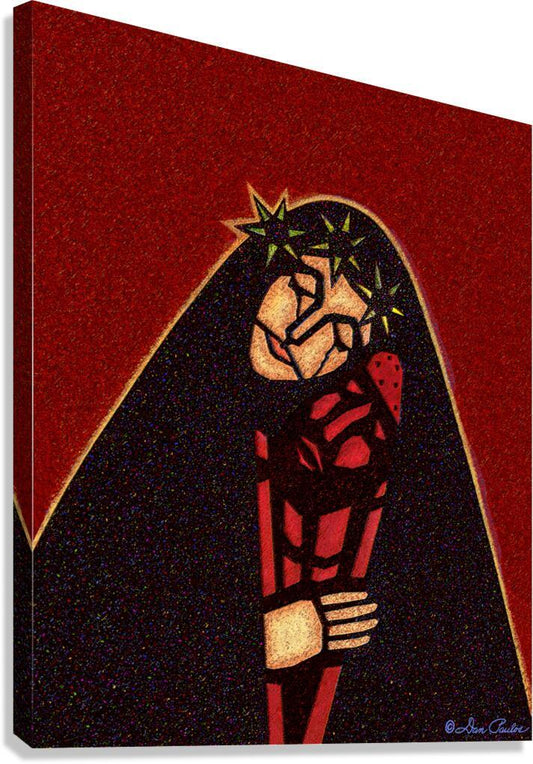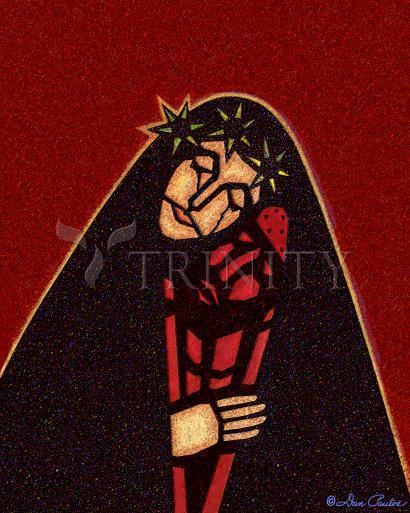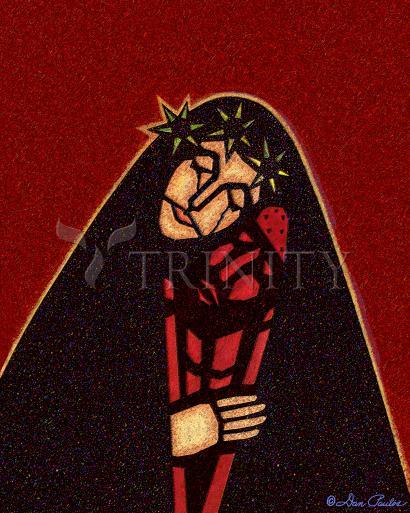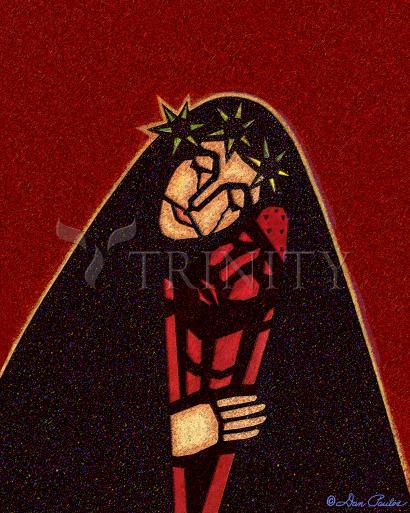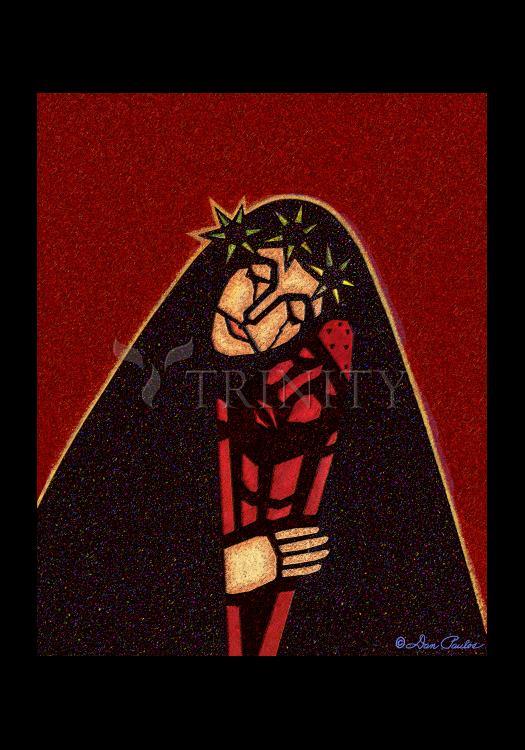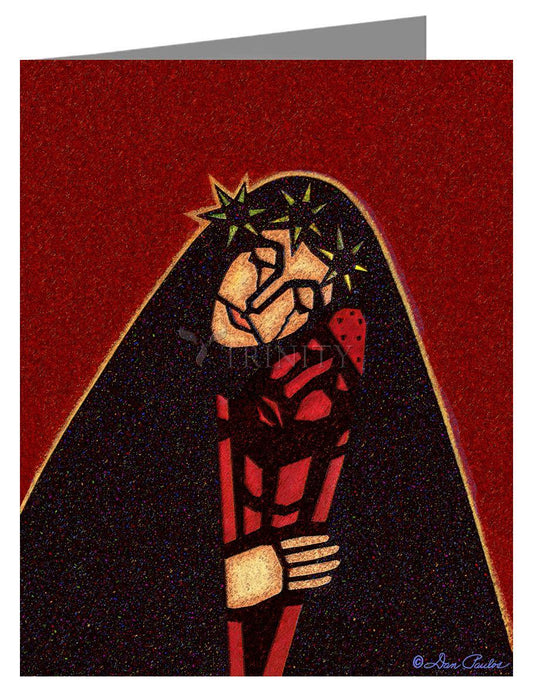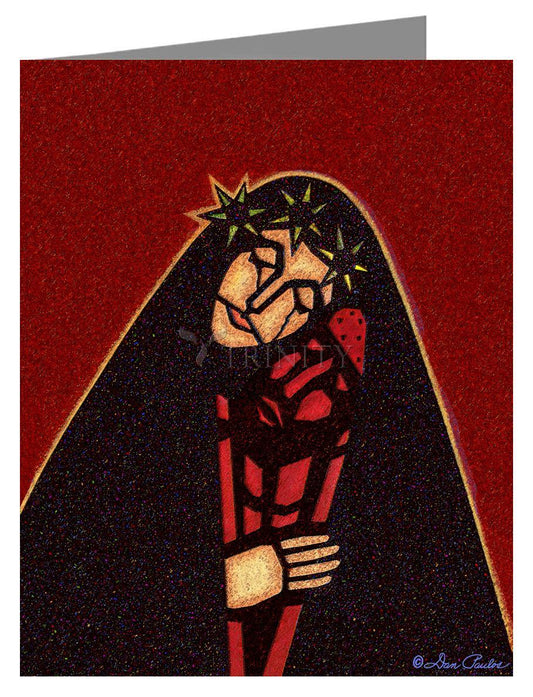The theme, which has no literary source but grew out of the theme of the lamentation over Christ's body, first appeared in the early 14th century in Germany. It soon spread to France and enjoyed great popularity in northern Europe in the 14th and 15th centuries. Although the Pietà remained mostly a Franco-German theme, its supreme representation is that completed by Michelangelo in 1499 and housed in St. Peter's Basilica in Rome. Influenced by the northern style, Michelangelo draped the figure of Christ across Mary's lap. Through this pyramidal design and the details of his figures, Michelangelo created a scene that displayed at once agony, solemnity, and heroic resignation.
The format of the Virgin bearing the body of Christ on her knees was standard until the 16th century, when, influenced by the Renaissance concern with logic and proportions, artists usually depicted Christ lying at the Virgin's feet, with only his head propped against her knees. This form was adopted by Italian Baroque art and was passed on to Spain, Flanders, and Holland.
Most religious art suffered a decline after the 17th century, but, because of its special emotional appeal, the Pietà continued to be a vital theme through the 19th century.



